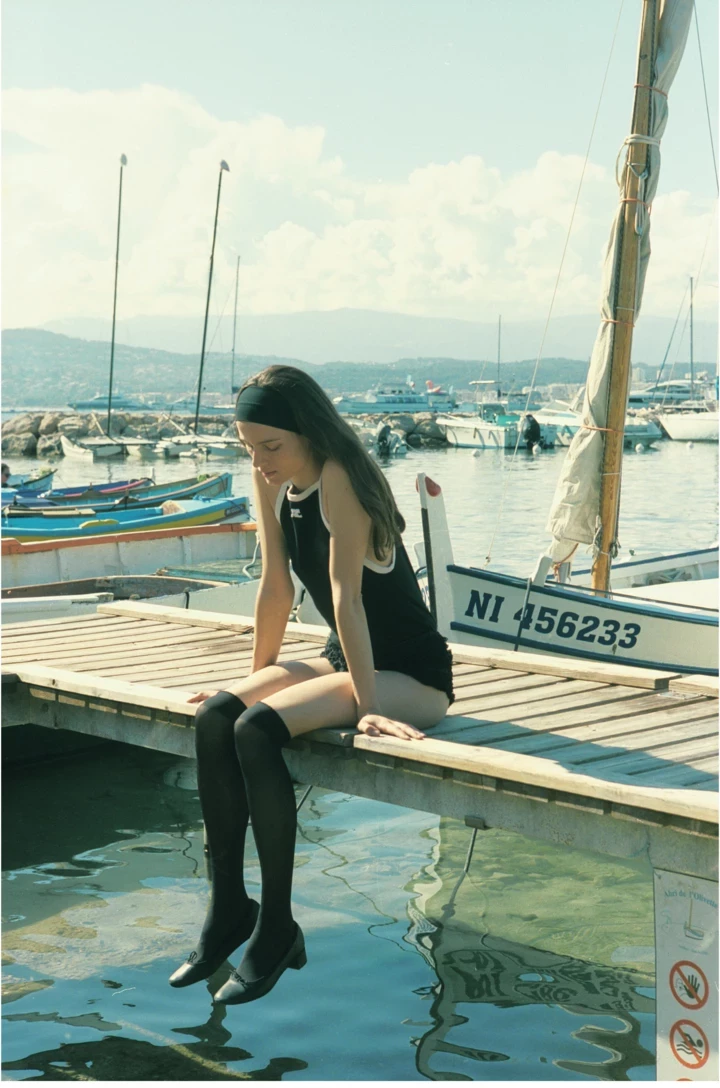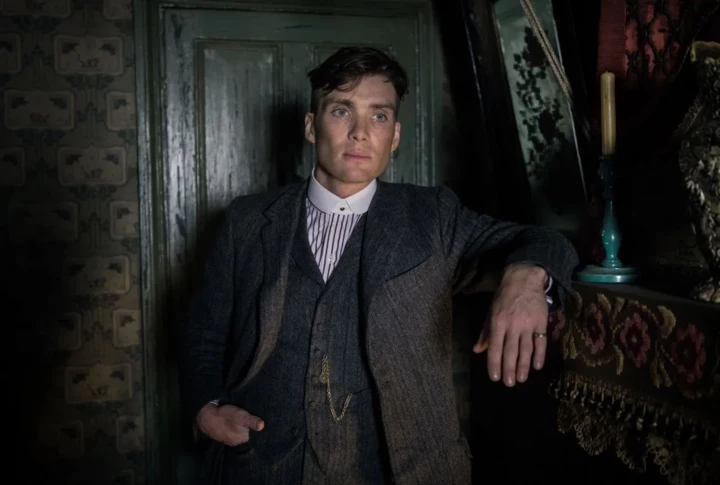
Save this storySave this storySave this storySave this story
The catalogue of great posthumous movies, such as “Eyes Wide Shut,” “Rebel Without a Cause,” and “Amazing Grace,” also includes another of the great music documentaries: Michael Lindsay-Hogg’s “Let It Be,” about the Beatles. The movie, shot in January, 1969, was intended to enshrine the recording of the group’s new album, from which the film takes its title, and their first public performance since 1966. But, in April, 1970, a month before the release of the album and the film, the Beatles broke up, and both works were forced to carry a burden of significance that overwhelmed their reception. Though the album became instantly popular and has remained ubiquitous, the movie wasn’t a hit and received mainly negative reviews (including in The New Yorker). It was understood—or, rather, misunderstood—as a memento mori, a dour and dispirited bit of forensics revealing motives for the breakup, such as the musicians’ personal conflicts and their artistic differences of opinion. Moreover, it never got a proper reëvaluation, in part because it wasn’t issued on DVD or Blu-ray. But now it’s available to stream on Disney+, in a new and authorized restoration by Peter Jackson, and this rerelease provides a welcome chance to acknowledge the movie’s mighty artistic merits, which far outweigh its dire premonitions.
Lindsay-Hogg filmed the Beatles on the outskirts of London, at Twickenham Film Studios, and in the heart of the West End, at the Savile Row headquarters of the band’s company, Apple. Then, with the editors Graham Gilding and Tony Lenny, he shaped about sixty hours of footage into a tightly dramatic film of eighty-one minutes. For all the troubles the movie reveals, it’s nonetheless a joyful compendium of creative energy. It catches mid-flow a torrent of imagination and craft, composition and spontaneity, and culminates in a scene of public performance that’s as unusual in its format as it is intimate in its charms. The director and other crew members are on view throughout, taking care of business while the cameras are rolling. Yoko Ono is there much of the time, and Linda McCartney stops by, bringing her daughter Heather, who drums with Ringo Starr and twirls around.
“Let It Be” catches the foursome—augmented, in the recording session, by the visionary keyboard player Billy Preston—in a kind of offhand ferment. Rehearsals are inseparable from hangouts, and jokey riffs fuse with master takes. The album was meant to be captured live in the studio, without added postproduction arrangements and overdubs. It didn’t quite work like that, and the course the project took was both a cause of conflict and a reflection of it. A major sticking point in the film is Paul McCartney’s desire to rework arrangements in the studio—to get at a particular “falling note” ending for “I’ve Got a Feeling,” and to micromanage George Harrison’s guitar performance on “Two of Us.” Such differences proved fatal, but, if one tries to watch with fresh eyes, pushing hindsight out of mind, they don’t seem much graver than the kind of disagreements that are typical of close artistic collaborations.
Instead, what comes across is how much of the movie is filled with inventive high spirits and exuberant playfulness, which inflect the music in surprising ways. At the beginning of the film, after Lindsay-Hogg and the crew finish setting things up, Paul is at the piano, a Blüthner grand, noodling through a range of fragments that sound borrowed from show tunes and classical music and that hint at the range of his interests and influences. Ringo joins him at the keyboard, and the two men exaggeratedly greet each other. (“Good morning, Paul!” “Good morning, Rich!”) Ringo adds a third hand to Paul’s two, and the pair of them improvise a boogie-woogie jaunt together. (“Didn’t know Rich could play,” Paul jibes.) Later, Paul puts on a mock-operatic voice to sing “Besame Mucho” and then “The Long and Winding Road,” the latter also getting a bossa-nova treatment. The blend of forms—joining rock and roll with sentimental balladry and folk songs, provincial humor and light-classical cheer, spiritual yearnings and bawdy fantasy, along with the band’s self-mocking self-awareness of mass-media celebrity—suggests why the Beatles became quasi-universal and made rock not just the music of teens but of much of the world.
What the group achieves in its freewheeling tension is miraculous. Listen to the hammering vocal riffs on George’s “I Me Mine,” which he calls a “heavy waltz” but which breaks out into an open-road rocker stomp. (John Lennon doesn’t play on the song, instead waltzing with Yoko, grandly and gracefully, while the others record.) Then, there’s Paul’s impulsive rediscovery of “One After 909,” which he and John wrote as teen-agers, leading Paul to reminisce about their both cutting school to go home and write songs. The underlying essence of the “Let It Be” performances is the rock of the fifties and early sixties. George launches into Leiber and Stoller’s “Kansas City,” which the Beatles recorded in 1964 (I bought the single when it came out here the next year; the B-side is “Boys”), and Lloyd Price’s “Lawdy Miss Clawdy.” Paul does Smokey Robinson’s “You’ve Really Got a Hold on Me,” which the group recorded in 1963, and “Shake, Rattle and Roll.” John offers a surrealistic twist on the return to rock’s roots with “Dig It,” an antic parody of Mick Jagger that’s fifty seconds on the album but a lot longer and wilder in the movie.
There’s a paradox at the core of “Let It Be.” Although the filming itself is always clearly in view, reflecting a very conscious choice about the band’s self-presentation, the documentary is far less a movie of reflexive media politics and self-crafted personae than other Beatles features, such as “A Hard Day’s Night” (1964) and “Help!” (1965). The group appears to have gone through the media machinery and come out the other side more themselves than they’d been since their earliest days. Thinking about that time, Paul says that he wishes there were a movie crew on hand in Hamburg in the early sixties, when the Beatles, naïve and spontaneous, had their breakthrough. In contrast, he says, “the hurdle of that nervousness is there now.” He felt that, to recover immediacy, the band had to appear in concert or else renounce the idea for good and acknowledge that they were, essentially, composers. Yet, in “Let It Be,” the camera largely assumes the role of the implicit public, and the Beatles, rather than self-crafting an image, let performance define them. The personalities that emerge are, above all, musical ones, and the band plays in the studio as if insulated, for once, from the stardom that, like the shrieks of feedback, formed and deformed their identities.
As Lindsay-Hogg was planning the film, he tried to persuade the Beatles to make a concert comeback in a spectacular fashion: at the Roman amphitheatre in Sabratha, Libya. It didn’t happen, and, instead, they made their return to live performance on the roof of the Apple building on a chilly January day, amid a daytime throng of London businesspeople dashing about until they gradually realized what was going on. Some intrepid souls climbed ladders to nearby rooftops; others looked on from the street until crowds formed and police showed up to monitor the commotion, warily. Watching this moment, one may find it shocking to hear the Beatles playing in public without any screaming fans. The streets may be long and the sky above may be boundless, but the roof itself is pretty small, with room for only a handful of listeners, and the Beatles seem to be playing not to the distant crowd below but to the few people they could see in their surrounding vicinity. Although the group is plugged in, the effect is of an unplugged concert, rock-and-roll chamber music minus walls. And, whereas Paul’s meticulous leadership is in the forefront of the studio recording, John turns the roof into his teeming garden of giddy wonders.
In 2019, it was announced that Peter Jackson was granted access to the roughly sixty hours of material that Lindsay-Hogg had shot, plus many hours of additional audiotapes. He oversaw its digital cleanup and created a new work from it, “The Beatles: Get Back,” a three-part film that totals nearly eight hours and was released, also on Disney+, in 2021. To my eye, too much of the grain was removed from the original footage, which was shot in 16-mm. (And Jackson’s new restoration of “Let It Be” uses the same de-texturizing process.) But the more substantive difference is that “Get Back” goes into much more detail regarding the Beatles’ conflicts. It shows George leaving the band and the negotiations to get him to return; it contains a private conversation between John and Paul that was caught on a hidden mike; it features far more of the social interactions in the studio, including with Yoko and Linda; and it catches the magic moment when Paul, fiddling around in the studio, gives spontaneous birth to the song “Get Back.” All in all, it’s a far more candid and comprehensive film, though it comes off as antsy and impatient. Jackson includes snippets from across an extensive array of material, as if he couldn’t bear to part with anything yet wasn’t really interested in watching much of it at length. He deploys these snippets to illustrate various themes, but those themes merely reflect the received narrative of the Beatles’ breakup and their final album. Rather than looking for new perspectives, Jackson merely substantiates what people already think they know.
Although the footage that’s in “Get Back” and not in “Let It Be” is of vast Beatles-ological significance, that purpose would have been served as well by making it available, as raw footage, online for casual viewers and historians alike, as was done with the outtakes from Claude Lanzmann’s documentary “Shoah.” Just as the transformative power of Lanzmann’s editing made what might have been a simple historical record into an enduring work of art, so the sharply conceived yet raptly fascinated editorial approach to “Let It Be,” in an altogether different register, makes it far superior to “Get Back.” Both as a cinematic experience and as an embodiment of style, “Let It Be” is the worthier tribute to the album and to the artistic power that gives the Beatles an enduring immediacy more than half a century after their breakup. “Get Back” takes the fuller historical view, but “Let It Be” is invigorated by its forward motion, propelled by the musical force that makes the Beatles historic. ♦
Sourse: newyorker.com







